Heil dir, edler Führer! Unsere Leute sind ohne Führung; verloren und im Schlamm herumstolpern. Sie brauchen jemanden, der sie aus diesen Ländern führt und eine Zivilisation gründet, die sich über alle anderen erheben und glänzen wird.
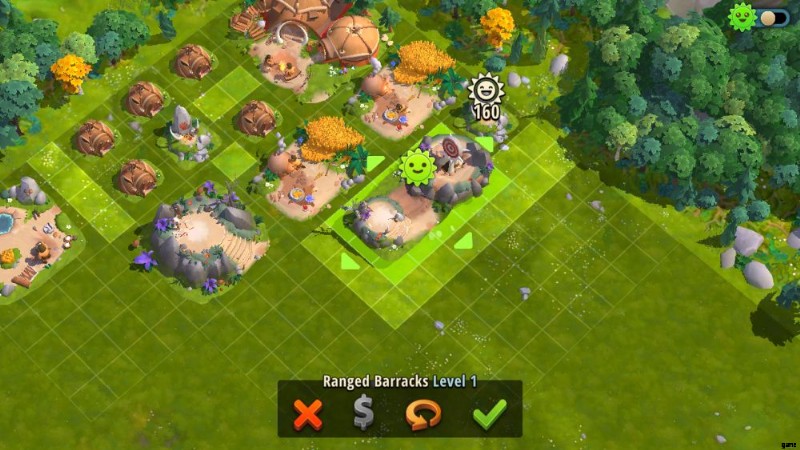
Aufstieg der Kulturen ist ein Spiel zum Aufbau eines Imperiums von InnoGames, bei dem Sie die Rolle des Dorfhäuptlings, dann des Monarchen und dann des Kaisers übernehmen. Es ist ein sehr entspannender Zivilisationsbauer, und soweit wir gesehen haben, gibt es kein direktes PVP . Rise of Cultures ist sowohl im Google Play Store als auch im App Store erhältlich.
Das bedeutet jedoch nicht, dass Sie einfach faulenzen können. Ein Imperium zu leiten ist ein harter Job, und wir haben einen Anfängerleitfaden für Rise of Cultures zusammengestellt , einschließlich Tipps, Tricks und Strategien, die Ihnen beim Aufbau Ihres Imperiums helfen.
Aufstieg der Wirtschaft
Keine Zivilisation kann ohne Ressourcen bestehen. Von Lebensmitteln, Steinen und Rohstoffen bis hin zu Münzen und fortschrittlicher Produktion – hier ist eine Anleitung zum Aufbau einer starken Wirtschaft in Rise of Cultures.
Gebäude
Alle Imperien brauchen Infrastruktur, um zu funktionieren, und Ihres ist keine Ausnahme. Gebäude in Rise of Cultures gibt es in vier verschiedenen Geschmacksrichtungen. Dies sind Häuser, Bauernhöfe, Kasernen und Kulturstätten.
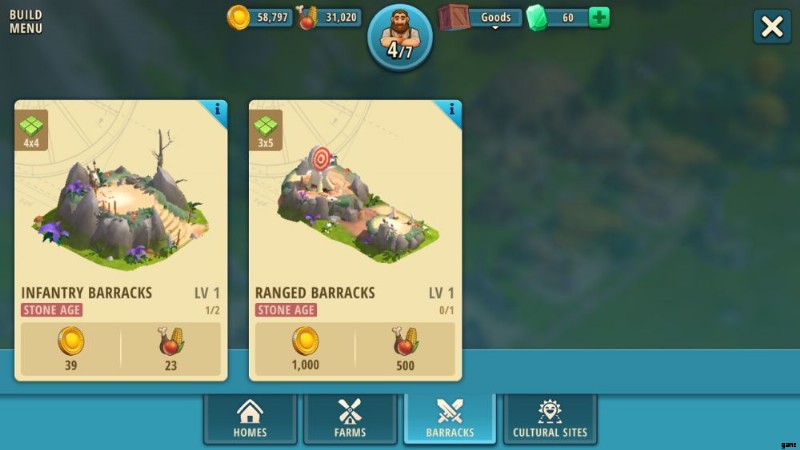
Häuser sind Orte, an denen deine Leute leben können. Jedes Haus gibt dir zusätzliche Arbeiter und generiert auch passiv Münzen, die du für so ziemlich alles brauchst.
Farmen und an anderen Produktionsstandorten können Sie Arbeiter einsetzen, um die Produktion zu generieren. Dazu später mehr.
Kaserne Hier können Sie Kampfeinheiten produzieren, um Ihre Kampagne durchzuführen. Beachten Sie, dass jede Kaserne nur eine bestimmte Anzahl von Einheiten beherbergen kann. Wenn Sie also mehr Einheiten wollen, bauen Sie mehr Kasernen.
Kulturstätten bringen Glück für angrenzende Gebäude, und wir werden später mehr darüber sprechen.
Gebäude in Rise of Cultures sind begrenzt – Sie können nur eine bestimmte Anzahl von jeder Struktur bauen. Denken Sie in diesem Sinne daran, Ihre Gebäude immer zu verbessern, wann immer Sie können , damit Sie die Limits optimal nutzen können.

Beim Platzieren von Gebäuden können Sie rotieren sie, damit sie in verschiedene Räume passen. Wenn Sie sich entscheiden, ein Gebäude zu verschieben, tippen Sie darauf und ziehen Sie es dann herum. Keine dieser Optionen kostet etwas, also scheuen Sie sich nicht, mit verschiedenen Stadtlayouts zu experimentieren.
Über dasselbe Menü können Sie auch Gebäude verkaufen. Dadurch erhalten Sie einen Bruchteil der Bau- und Ausbaukosten des Gebäudes zurück. Beachten Sie, dass im Falle einer Kaserne alle darin untergebrachten Einheiten verloren gehen, wenn Sie das Gebäude verkaufen .
Sie können auch Gebäude verbessern, die Sie bereits platziert haben, indem Sie auf das Gebäude und dann auf das Upgrade-Symbol oben links tippen. Beachte, dass du ein Gebäude nicht upgraden kannst, wenn es einen laufenden Produktionsauftrag gibt.
Premium Gebäude und Gebäudeinformationen
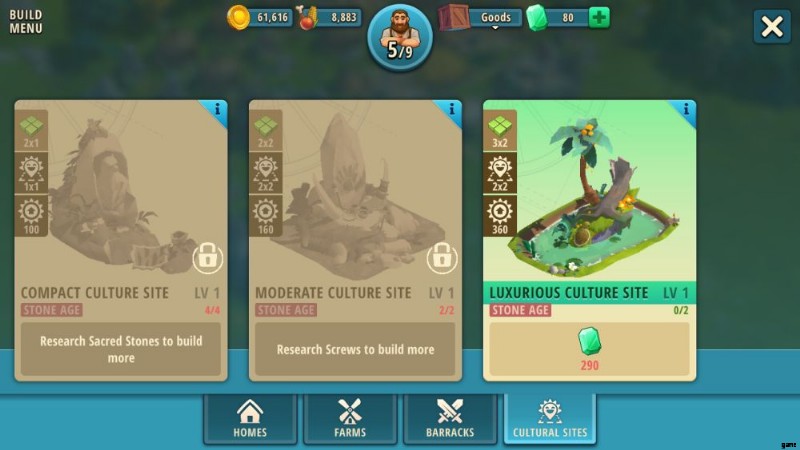
Wie Sie vielleicht schon bemerkt haben, kosten einige Gebäude Edelsteine statt Ressourcen. Diese Premium-Gebäude sind viel effektiver als andere Gebäude aus der gleichen Zeit, verwenden aber wichtige Edelsteine zum Bauen. Sie sollten die Vor- und Nachteile eines Premium-Gebäudes gegenüber einem Standardgebäude sorgfältig abwägen, bevor Sie sich für ein Gebäude entscheiden.
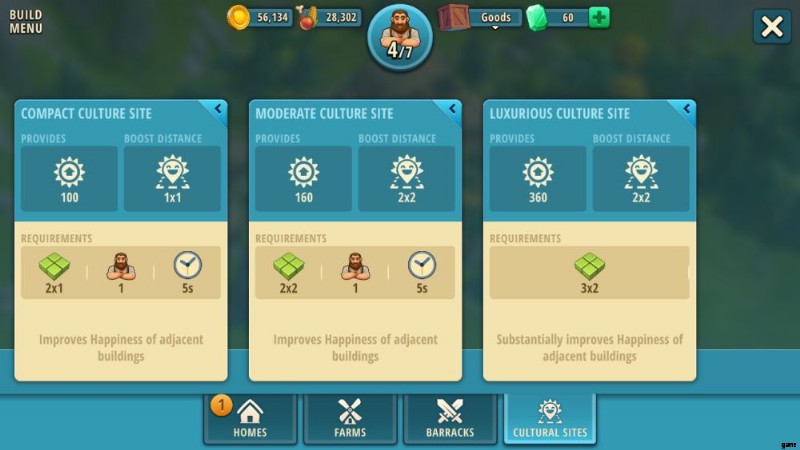
Um Ihnen bei Ihrer Auswahl zu helfen, können Sie auf Info tippen Taste, um die Karte des Gebäudes umzudrehen. So können Sie schnell ablesen, was das Gebäude produziert, wie viel Platz es einnimmt und wie lange es dauert, Dinge zu produzieren.
Bausteine
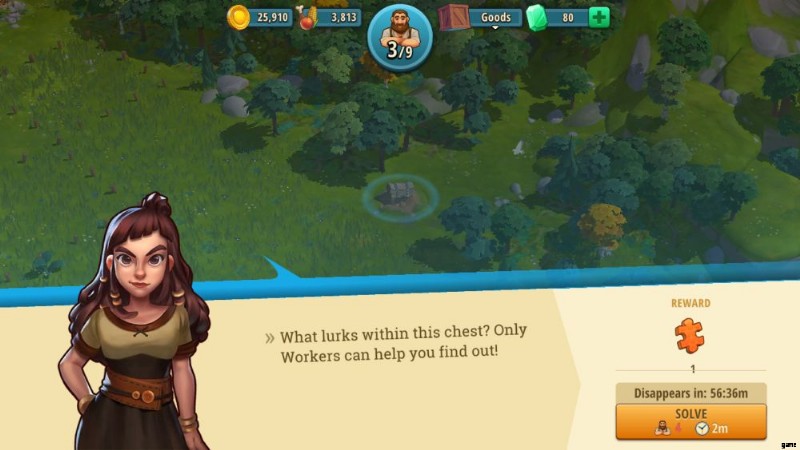
Bauteile sind Gegenstände, die ab der Bronzezeit verfügbar werden. Für diese speziellen Puzzleteile müssen Sie eine große Menge davon zusammenbauen, danach können Sie das entsprechende Gebäude platzieren. Normalerweise gibt es keine andere Möglichkeit, diese Gebäude zu bauen, aber sie bieten beträchtliche Boni.
Wunder
Sobald Sie das Bronzezeitalter erreicht und die entsprechende Technologie erforscht haben, können Sie Wunder erschaffen . Dies sind riesige Monumente, die mächtige, einzigartige Boni bieten.
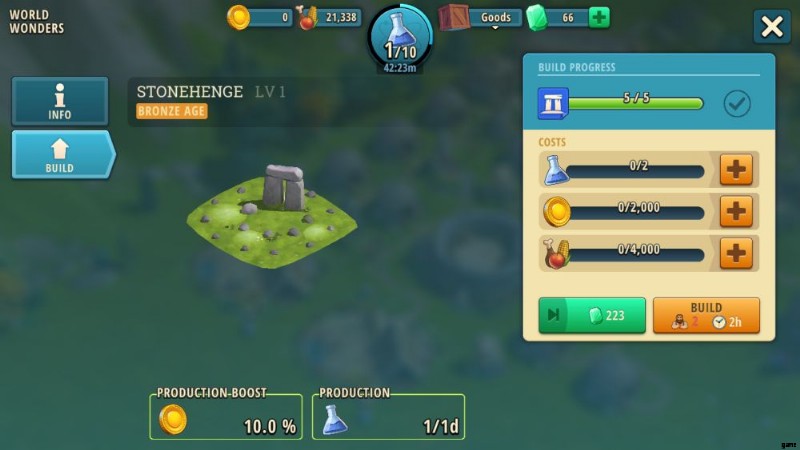
Der Bau eines Wunders erfordert jedoch eine große Investition an Ressourcen. Du musst nicht nur Münzen und Produktion bezahlen, sondern auch Forschungsflaschen in den Bau eines Wunders investieren. Darüber hinaus können Sie nicht einfach ein Wunder auswählen und es bauen – Sie müssen genügend Teile dieses Wunders erwerben, um es entweder zu bauen oder zu verbessern (ja, Sie können Wunder verbessern).
Arbeiter
Arbeiter sind die Grundlage jeder Wirtschaft. In Rise of Cultures brauchst du immer Arbeiter, wenn du etwas erledigen musst, sei es das Sammeln oder Produzieren von Ressourcen, der Bau von Gebäuden oder das Abhandeln von Ereignissen.
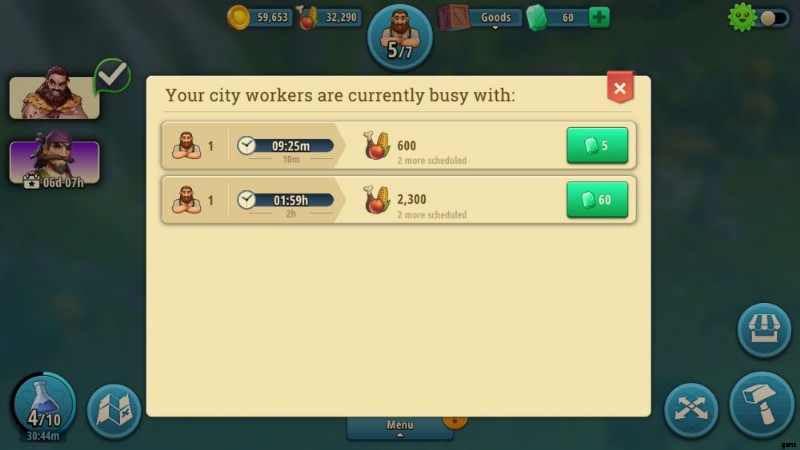
Im Gegensatz zu anderen Städtebauern sind Sie nicht auf ein paar Baumeisterplätze pro Stadt beschränkt. Stattdessen jedes Haus, das Sie errichten erhöht Ihre Gesamtzahl an Arbeitern . Das hilfreiche Arbeiter-Infofeld oben auf dem Bildschirm sagt Ihnen, wie viele untätige Arbeiter Sie haben, im Vergleich zu wie vielen Arbeitern Sie insgesamt haben . Idealerweise sollten Sie ein paar Arbeiter untätig lassen, um auf Vorfälle zu reagieren, während Sie den Rest entweder in Produktionsgebäuden oder auf dem Bau einsetzen.
Jedes Mal, wenn es eine Produktionswarteschlange gibt, sei es beim Ackerbau, beim Schlachten von Tieren oder beim Ausbilden neuer Einheiten, benötigen Sie einen Arbeiter. Denken Sie daran, besonders wenn Vorfälle auftauchen.
Produktion
Ihre Arbeiter werden nur in Ihrer Stadt herumlungern, es sei denn, Sie weisen ihnen Aufgaben auf einer Farm oder einem Produktionsgebäude zu .
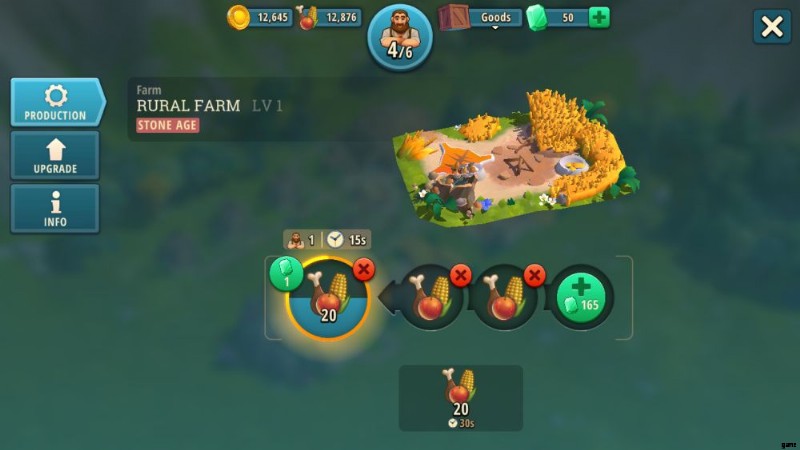
Sie können bis zu 3 Produktionsaufträge gleichzeitig in die Warteschlange stellen und einige Edelsteine berappen, um einen 4-Slot freizuschalten. Es muss auch betont werden, dass Produktionsgebäude nicht passiv Ressourcen generieren – ihnen muss ein Arbeiter zugewiesen und die Produktion in die Warteschlange gestellt werden. Wenn Sie es sich anders überlegt haben, Arbeiter für die Produktion einzusetzen, können Sie auch einen Artikel in der Warteschlange stornieren, aber Sie erhalten nichts von einer stornierten Bestellung.
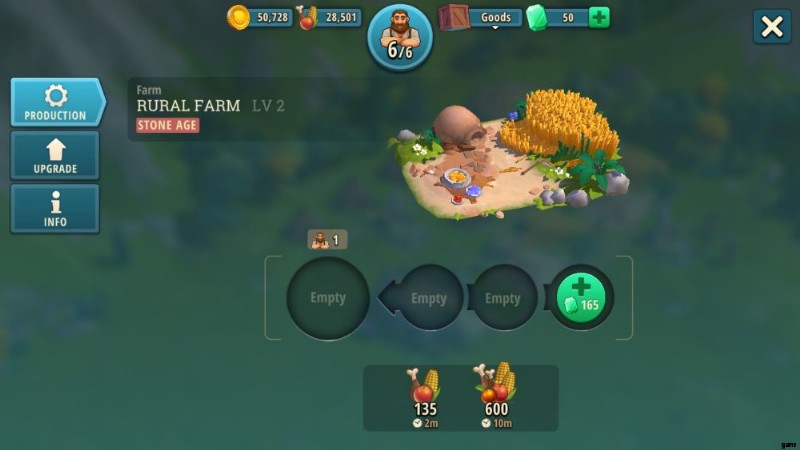
Wenn Sie Ihre Farmen und Einrichtungen aufrüsten, erhalten Sie Zugriff auf zeiteffizientere Produktionsaufträge, sodass Sie das Spiel nicht jede Minute überprüfen müssen. Dies ist besonders wertvoll, wenn Sie zum ersten Mal in eine neue Ära einbrechen – neue Technologien und Upgrades kosten in der Regel viel, viel mehr als gewöhnlich.
Ihr Rathaus
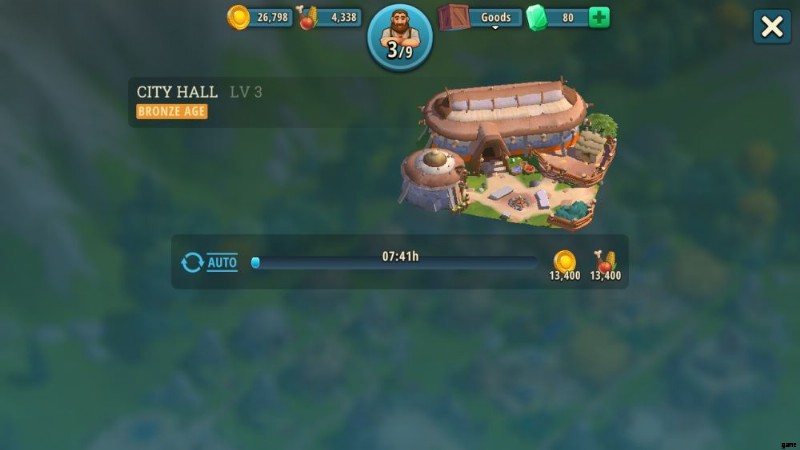
Ihr Rathaus ist ein besonderes Gebäude , dass es alle 8 Stunden sowohl Münzen als auch Produktion automatisch produziert. In diesem Sinne sollten Sie von Zeit zu Zeit vorbeischauen, um die Ressourcen Ihres Rathauses zu erhalten – sie stapeln sich nicht und sind ziemlich viele Ressourcen.
Waren
Waren sind eine tertiäre Ressource, die Sie benötigen, um fortschrittlichere Technologien zu erforschen und mit Ihren Verbündeten zu handeln.
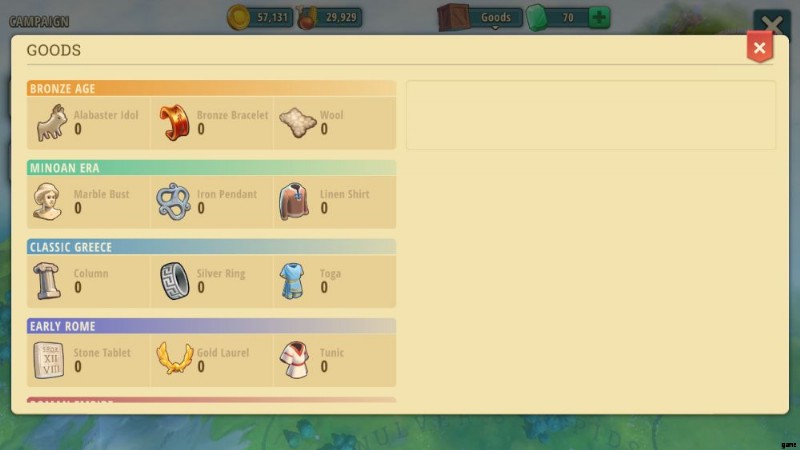
Waren werden erst verfügbar, nachdem Sie Wolle erforscht haben in der Bronzezeit. Sobald Ihre Fähigkeit zum Produzieren von Waren freigeschaltet ist, würde ich empfehlen, immer das freigeschaltete zeitgenössische Gut zu produzieren da Sie normalerweise reichlich davon benötigen.
Kultur
Während Ihre Arbeiter damit zufrieden sind, in der heißen Sonne herumzutrotten und sich abmühen, 30 Sekunden lang Ernten anzubauen, können Sie sie glücklicher machen um die Produktion anzukurbeln.
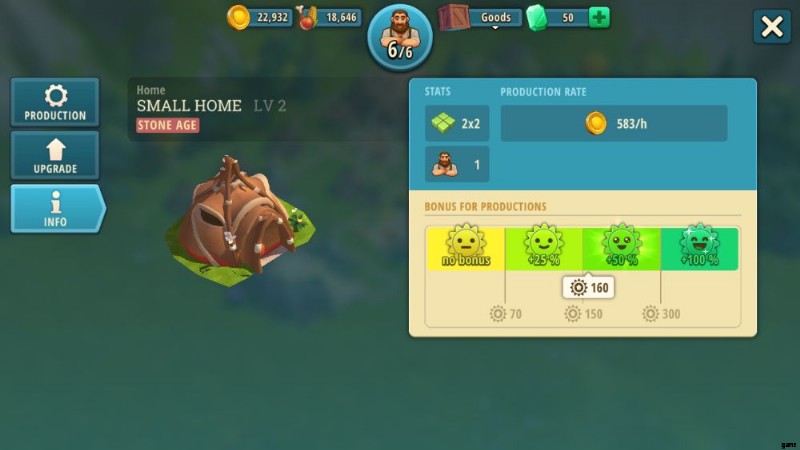
Sobald Sie Höhlenmalereien erforscht haben , können Sie mit dem Bau Ihrer ersten kulturellen Gebäude beginnen . Diese Gebäude sind insofern einzigartig, als sie selbst nichts beitragen, aber die Zufriedenheit der nahe gelegenen Gebäude erhöhen und ihre Leistung verbessern! In Anbetracht dessen ist es ratsam, Ihre Wirtschaftsbezirke um kulturelle Gebäude herum zu planen.
Beachten Sie, dass das Infofeld Ihnen genau sagt, wie viel Glück Sie generieren müssen, um die Produktionsboni eines Gebäudes zu aktivieren. Im obigen Bild benötigen wir mindestens 300 Glücksmomente, um den höchstmöglichen Boost auszulösen.
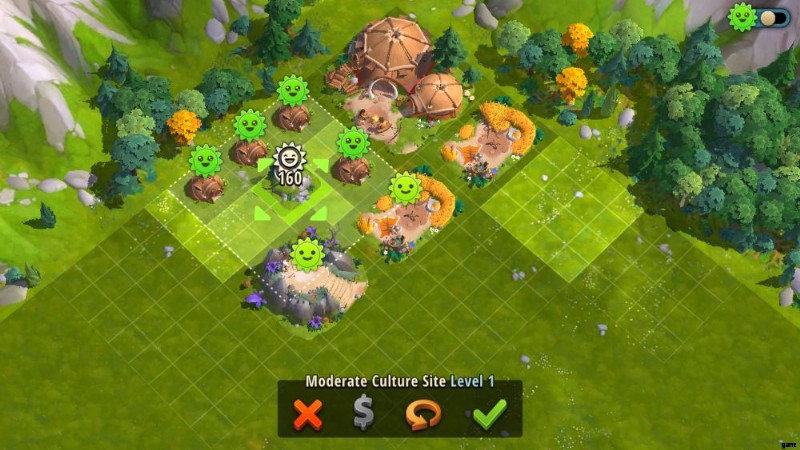
When you place a cultural building, a ghost outline will be drawn around it, showing the radius of happiness that it will produce if placed in that area. If you’d like to see the current happiness of buildings in your city, as well as all sources of happiness and how much they produce, tap the happiness button on the upper right of the screen.
Incidents
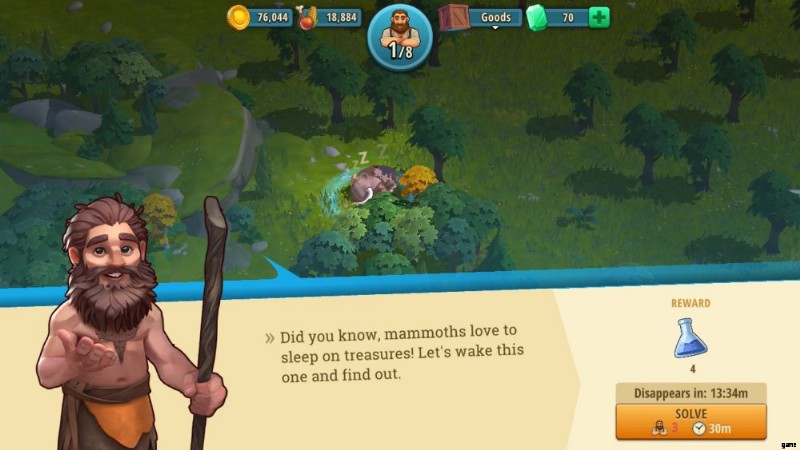
Keep an eye out for incidents , as indicated by blue arrows. You can also tap these arrows to be brought immediately to the event. These offer lump sums of resources without you having to supervise production. Some incidents can even yield valuable research flasks , so keep an eye out for them.
Incidents will disappear after some time if they aren’t attended to. You’ll also still need to tap the event once their timer is finished to resolve them and claim your prizes.
Advisor Quests
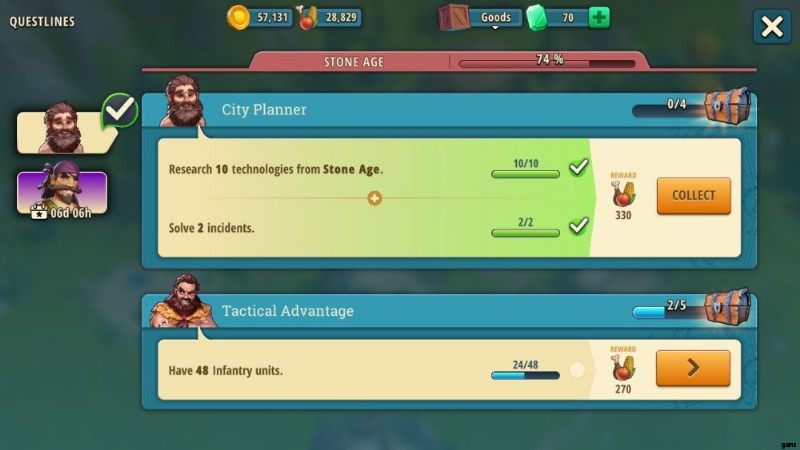
As you play Rise of Cultures, your advisors will give you quests. These quests are a great way to learn basic game mechanics while also giving you healthy infusions of resources (particularly expansions and research flasks) to help you blitz through the early game.
To check your current advisor quests, tap the portrait in the upper left of the screen. Double arrows will appear if you have an objective that hasn’t been fulfilled yet, while a check mark means that a quest has been completed and you can turn it in. You can also tap the chests on each quest to see what the quest’s final reward will be.
Note that quests often have several stages, so don’t be surprised if your quest isn’t complete after a single turn in.
Events
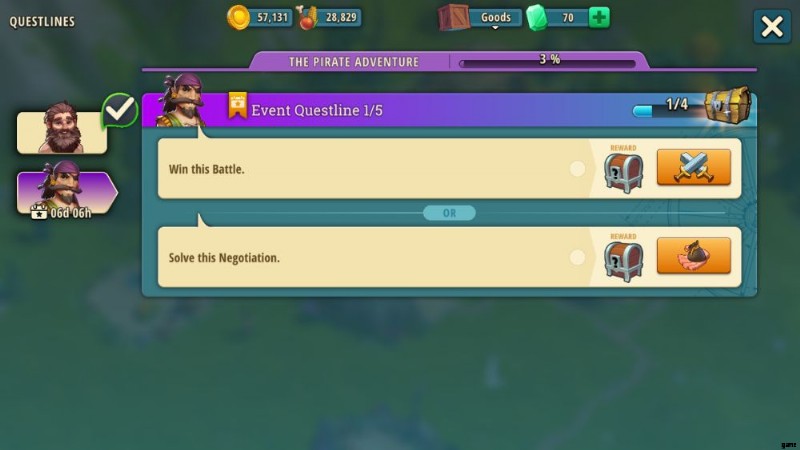
Events are a staple in any game. To participate in events in Rise of Cultures, you’ll first need to research the Tribal Celebrations technology. Once you’ve unlocked the secrets of partying, any active event will appear as a button below your advisors.
Event quests have their own rewards and require you to do different things. Like advisor quests, you can also tap the chest to see what the final reward will be.
Keep An Eye On Your Research Tree
Your culture can’t rise if your people are left digging in the dirt and wondering what to do with all those precious shiny rocks that come out of the ground. Better science makes for better living, after all, and you’ll need to research new technologies to progress from one era to the next.
Research Flasks and the Research Tree
Rise of Cultures’ technology systemrequires you to not only spend gold and resources, but also research flasks. These all-important items regenerate at the rate of 1 point per hour, and won’t go over the default limit of 10 flasks . Be sure to maximize your flask usage by logging in and spending your flasks before they hit the limit.
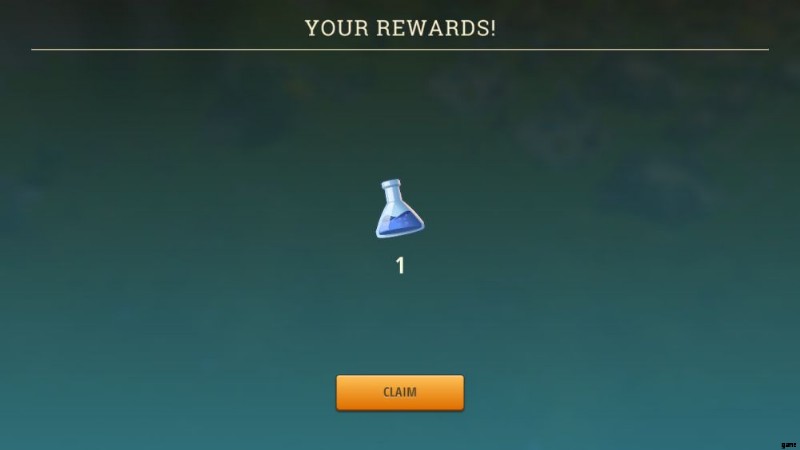
At the beginning, you won’t need that many flasks for technologies, and you’ll often be able to buy multiple technologies with each login. However, as your civilization and scientific understanding grow, you’ll need much more flasks than ever before.
There’s a specific trick you’ll need to master in Rise of Cultures; namely, that the flask cost of technologies must first be paid before the gold and resources cost. This means that you can invest flasks in available technologies even if you can’t afford them yet. By using this method, you minimize research downtime as you’ll be constantly spending and regenerating flasks.
Era Advancement
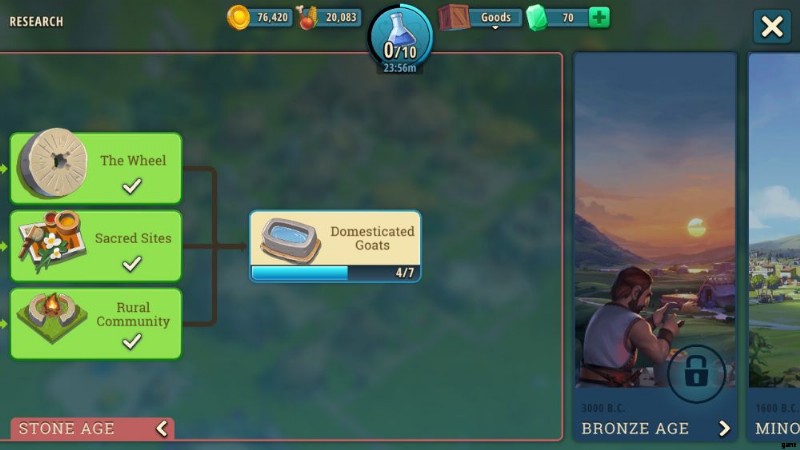
Not only do you need to research all technologies from a previous era to advance to the next one, but you’ll also need to complete all the quests from that era . Since these quests give you large amounts of resources and research flasks, always to do them in tandem with your research.
Claim New Lands
You’ll soon realize how quickly space runs out within your little slice of the world. Before you can claim new lands, you’ll need to train fighting men and research new technologies to not only conquer, but hold new territories.
Expansion Pieces
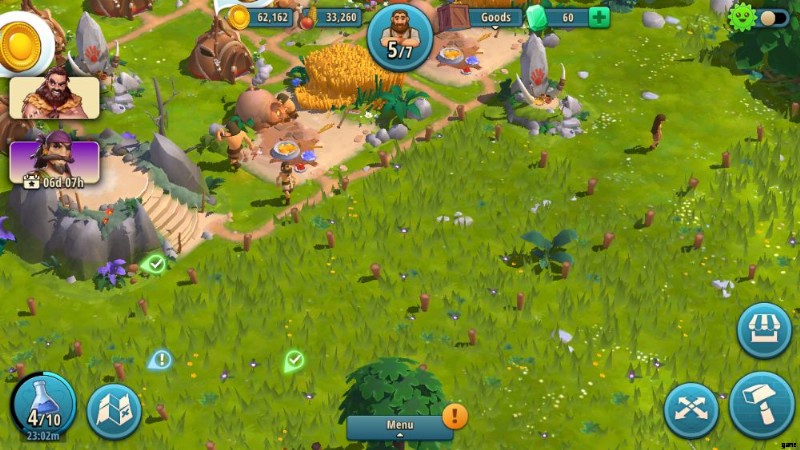
Let’s be frank – the starting space you’re given is tiny, and you’ll need more land if your city is to grow. To claim more land around your starting area, you’ll need to use expansion pieces.
Expansion pieces are, more often than not, given as quest rewards for completing levels on the campaign map . You also have the choice of shelling out Gems for them, but you can only do this thrice. Don’t go thinking that you can forego expansion, either – many quests require you to build certain amounts of buildings or conquer a certain amount of territories, so you’ll need to train up an army
To Battle!
By tapping on the map button on the lower right, you’ll be brought to the campaign map where you can scout and attack adjacent regions. Note that a region must be scouted before you can conduct any operations in it. Once a region has been scouted, you’ll be able to zoom into it and tap any of its districts to duke it out with whatever resistance there is.
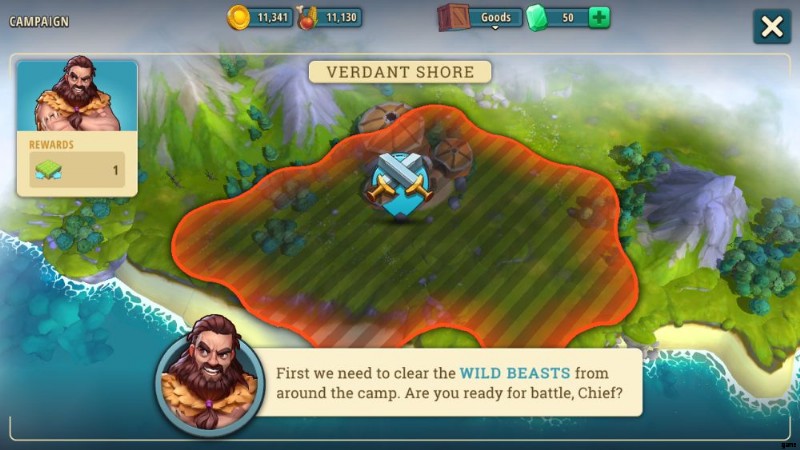
At the onset of battle, you’ll be asked to position your available troops on your side of the field . Common sense should prevail here – make sure that your vulnerable ranged units remain behind their more durable melee comrades.
Combat plays out almost automatically, with each unit simply charging forward and engaging the nearest enemy they can find – this means that melee units can and will be swarmed.
The health bars that appear on the battlefield represent the combat strength of that unit, essentially the sum of health of all of its constituent parts. In spite of this, each unit actually has its own stats which you can view in the info panel when you train them.

What you can do in combat is use abilities. During your first battle, you’ll gain access to the huge rock ability via your default commander Harald. This ability hurls a boulder at a targeted area, damaging your foes caught in the impact zone. As you progress in the game, you’ll gain more commanders , who each have their own unique abilities that can turn the tide of combat in your favor.
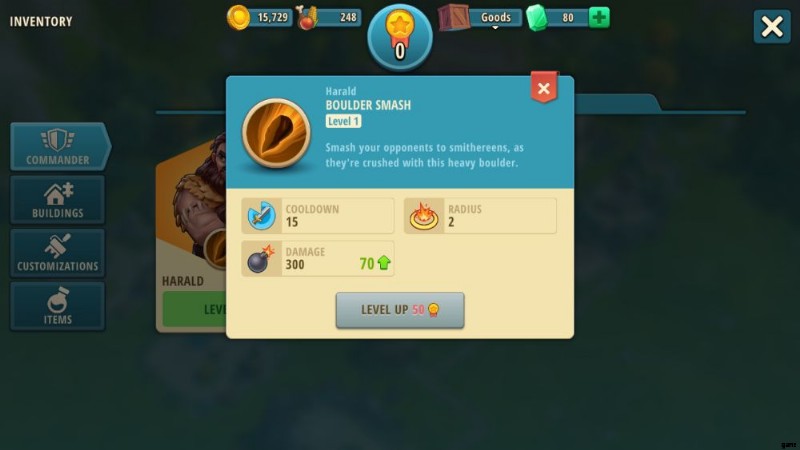
Commanders can be strengthened further via commander medals . These allow a commander to level up, increasing the efficiency of their skills. The fastest and easiest way to earn these medals is via the campaign map. To access your commander menu, tap inventory in the menu panel.
Dealing with Casualties
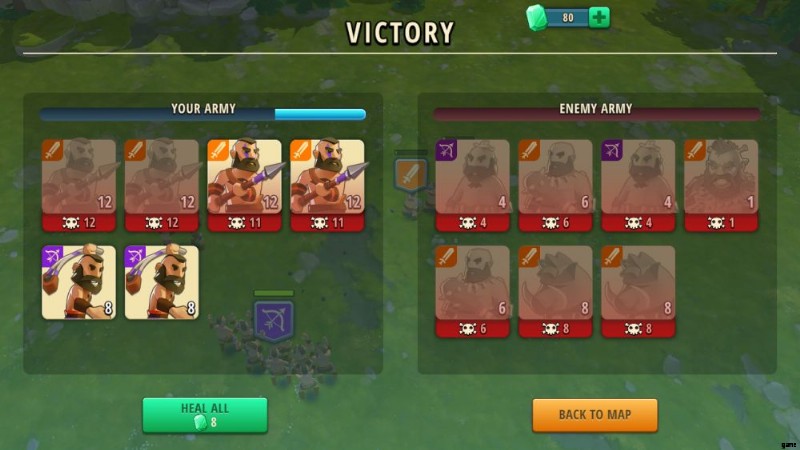
Using force to subjugate your enemies is also expensive. Casualties will often be high, and rarely, if ever, will you find yourself fighting a battle against a foe with inferior technology.
After battle resolves, you’ll see a quick summary of how many units you’ve lost versus how many your enemy lost. In this menu, you’ll be given the opportunity to instantly restore your units to full power via Gems.
It’s usually a far more economical option to just train new units at the barracks. Because of how often you’ll have to fight, always set aside some resources and workers to train new units if you’re planning to fight .
Join An Alliance
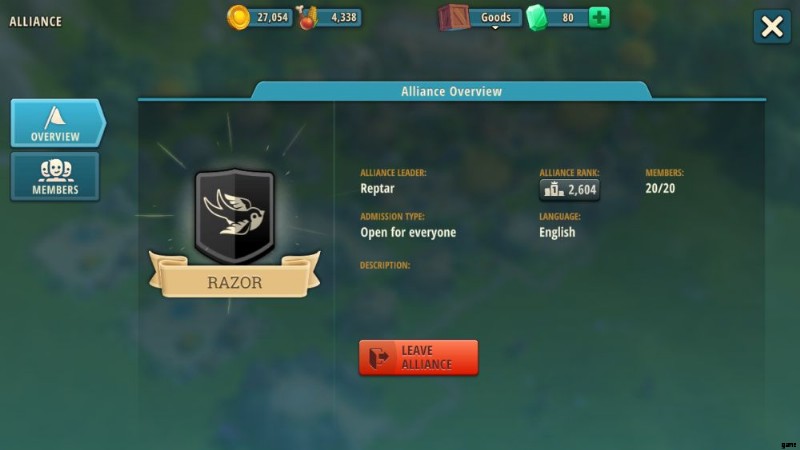
While alliances are currently limited in scope in Rise of Cultures, it’s still important to join one. Before you can join an alliance, you’ll need to have reached the bronze age and researched the alliances technology.
As of writing, alliances have 2 major functions – trading and wonder building.
Trading
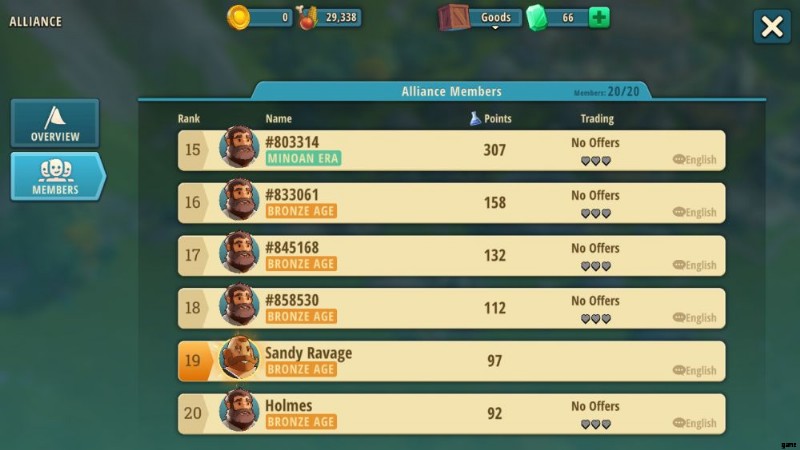
Alliance members can directly trade goods with one another . These trades don’t even have to be done in person as each member can simply set up their own trade offers in the alliance menu. However, you’ll need to first reach the Minoan age and research the appropriate technology before you can trade.
Wonder Assistance
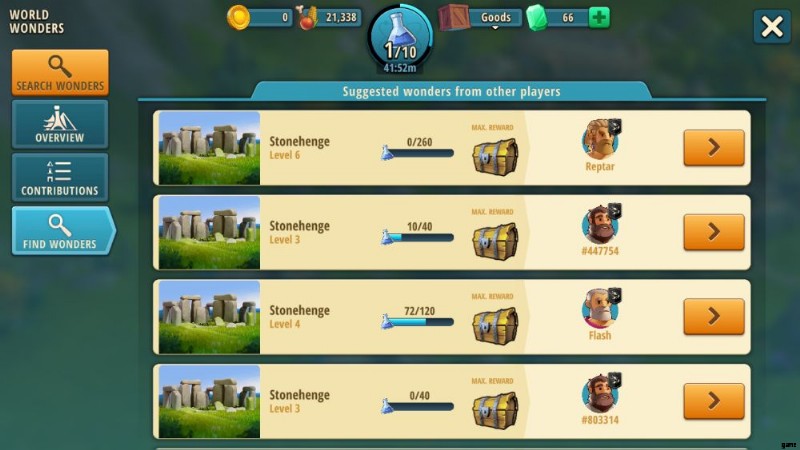
We’ve already talked about wonders, and if you’ve ever built or upgraded your own, you’ll know that it’s expensive. True, they provide powerful buffs and generate resources – but they eat a ton of base resources and need research flasks too.
This is where your alliance comes in handy. By requesting help for your wonder , your alliance members can donate resources – like flasks – to help you complete your wonder. They don’t go home empty-handed either, as anyone who contributes to a wonder gets a prize at the end of it, which can include pieces of wonders . This goes both ways; you should chip in and help your alliance members too!
Standing Up To The Test Of Time
As I like to say, Rome wasn’t built in a day, and neither will your empire. Only a steady and decisive hand will allow your people to rise up from their humble beginnings and become a major player on the world stage. But in spite of the trials and challenges that will inevitably come to test your empire’s might, your people trust in you to lead them to glory.
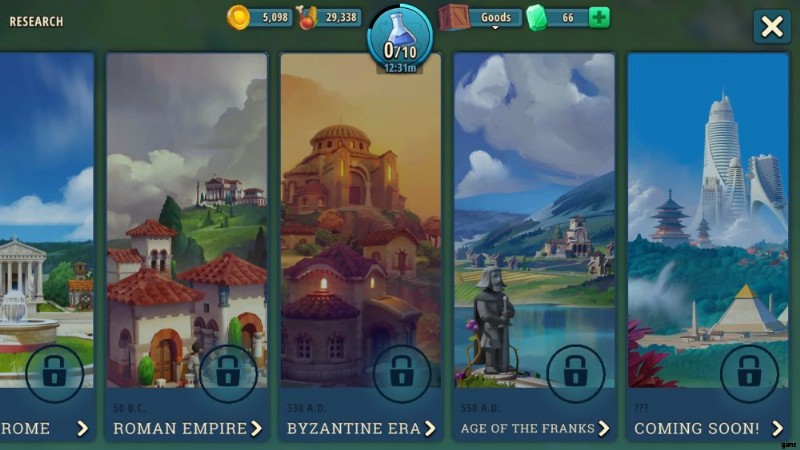
That concludes our Rise of Cultures beginner’s guide, and we hope that the pointers and tips we’ve laid out here will help you start your empire on the right foot. If you have any comments or anything else you wish you knew when you were first starting the game, let us know in the comment area below!
